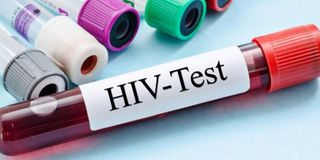Scientists irked by low viral load suppression among people with HIV

What you need to know:
Scientists from the Medical Research Council (MRC), Uganda Virus Research Institute (UVRI) and London School of Hygiene and Tropical Medicine (LSHTM) say while most people living with HIV in the country are on treatment, the same group is not suppressing the viral load due to drug resistance
Scientists have expressed concern over low viral load suppression among people living with HIV/Aids in Uganda.
Scientists from the Medical Research Council (MRC), Uganda Virus Research Institute (UVRI) and London School of Hygiene and Tropical Medicine (LSHTM) say while most people living with HIV in the country are on treatment, the same group is not suppressing the viral load due to drug resistance.
“Currently, we have about 1.5 million people living with HIV in the country, of which about 1.3 million people are on treatment. The coverage among those on treatment is a bit high, but one of the challenges is that we have not reached very good targets of UNAIDS as far as viral suppression is concerned,” Dr Deogratius Ssemwanga, a senior scientist with MRC/UVRI and LSHTM, told journalists at the UVRI headquarters in Entebbe on Wednesday.
“We are at about 95 percent. However, it is very unfortunate that among those patients who are not suppressing and those on treatment, when we test for HIV drug resistance, we are seeing more than 90 percent of these individuals with drug resistance,” he added.
According to the 95-95-95 targets set by the Joint United Nations Programme on HIV and Aids (UNAIDS), by 2025, 95 percent of all people living with HIV will have known their status; 95 percent of all those diagnosed with the disease will have received sustained treatment; and the same percentage should have suppressed viral load.
Drug resistance refers to a situation where a person on treatment is not controlling the virus. Instead, the viral load continues to increase. Dr Ssemwanga attributed the drug resistance in Uganda to failure to adhere to treatment, among other factors.
He added that their surveillance indicates that the trend is common among high risk populations such as sex workers and fishermen.
“In relation to female sex workers, we have noted that viral load suppression is not as good as most of the general population for several reasons. When we test individuals, who are not suppressing the virus, there is a very high prevalence of drug resistance,” Dr Ssemwanga explained.
“And the unfortunate thing about the female sex workers is most of them are very active in the business, which is a challenge since they are most likely transmitting,” he added.
He also noted that since 2008, they have done a lot of research in fishing communities in Masaka, on islands of Lake Victoria, and in Entebbe, and the findings were similar to those of the female sex workers.
“…. when you test those who are not suppressing, it is very high as there is a lot of resistance among these individuals. Just like female sex workers, fisher folk are very active,” Dr Ssemwanga said.
Dr Ssemwanga cited another study dubbed “the missing men.”
“You will approach HIV positive women, who eventually enroll in treatment, but when you ask about their partners, they are there but are not enrolled. So, we undertake some kind of contact tracing to look for them and test them as well. These individuals are not in care, they have high viral loads and they are sexually active,” he noted.
Dr Josephine Birungi, a scientist at MRC, emphasised integrated management of HIV and non-communicable diseases is recommended across many African countries but that evidence of the effectiveness of the model and its effect on HIV outcomes is still lacking.
“We discovered that when you bring patients of hypertension, HIV and diabetes together in one clinic, the health facility saves costs in many ways instead of running multiple clinics for different conditions,” she said
She noted a challenge with the fact that HIV drugs are free of charge unlike those of diabetes and hypertension.
Dr Yunia Mayanja, another scientist with MRC, said adolescent girls and young women between 15 and 24 years are at a high risk of acquiring HIV.
“When we talk about prevention of HIV in this group, we are speaking about pre-exposure prophylaxis, which many of us call PrEP. We have had other kinds of PrEP being developed. The pill is taken daily as long as you are at risk of HIV infection. Once the risk reduces, you go off it,” she said.
“There are also injections. Injectable PrEP is recommended by the WHO and also approved by the Ministry of Health in Uganda, but is not yet available for use in the country,” Dr Mayanja added.





